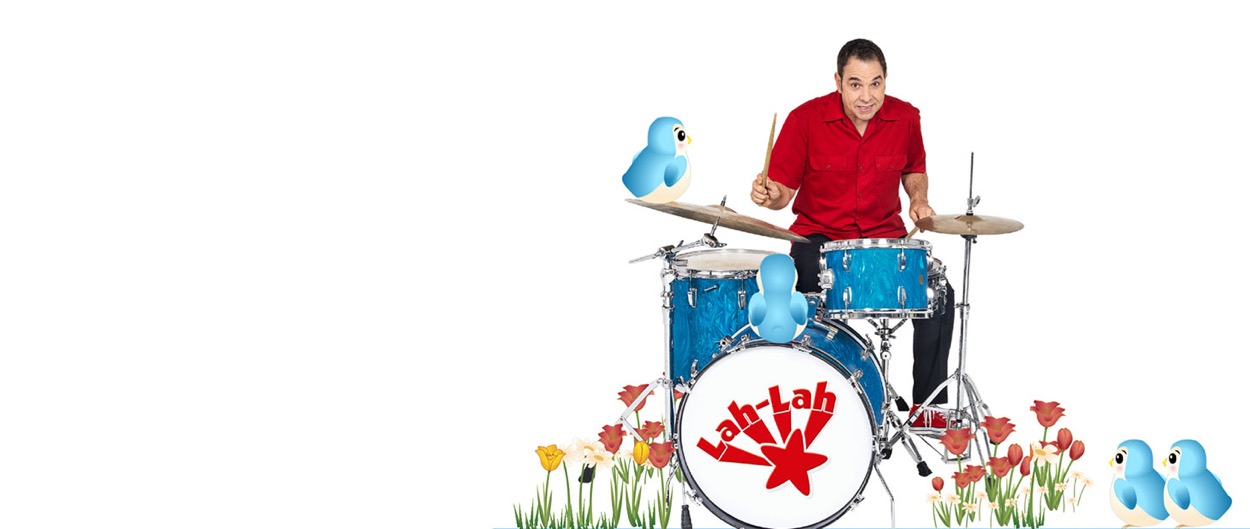

Texture refers to the overall sound and feel of a piece of music, and how the number of instruments, voices and different timbres work together to create this effect.
Just as the number and type of ingredients effects the texture of a chocolate cake, the number and type of timbres effects the texture of the Big Live Band’s music.

- Discriminating between loud and soft, fast and slow, long and short, and high and low sounds
- Identify and discuss different layers of sound in music
- Learn and use texture vocabulary, including light, heavy, thin and thick.

Have you heard the word ‘texture’ before? When we talk about texture, we usually mean the way that something feels when we touch it. Find a partner, and tell them three texture words that you know, such as smooth, or spiky. We can also use the word ‘texture’ to describe the sound and ‘feel’ of music.
What do you think ‘light’ music might sound like? What about ‘thick’ music?
Teacher Tutorials
Explainer
Elaboration
Extension
Music Clips
Buzz’s Writing Song
I Get Up with the Birds
Pack Away
Lessons
Lesson 1
WALT: Think and talk about the layers of sound in music.
Discussion starter
Buzz the Band Leader sings about the layers of sound in music in ‘Buzz’s Writing Song’: “First you take a little note, and you make a little tune. Then you put it with a word, then it’s ready to be heard.” What other sounds does Buzz add to the song? How do these instruments change the sound of the song? How does this music make you feel?
Learning task
Cue up diverse pieces of music on available technologies in your classroom, such as an interactive whiteboard, desktop computers, laptops, tablets, a smart phone, or a CD player. Your selection might include orchestral music, pop or rock favourites, or songs drawn from your students’ cultural backgrounds.
Have groups of children listen to a given piece of music, think about and discuss the layers of sound they hear, and then share with the class about the overall sound and ‘feel’ of their music. Explain that musical ‘texture’ is how we describe the layers of sound in music, and the overall effect these create.
Lesson 2
WALT: Describe the texture of pieces of music.
Discussion starter
Which voices and instruments might be best for representing chirping and flittering birds in music? Watch ‘I Get Up with the Birds’ with your students, and then have them describe the overall sound and feel of the piece. Are the sounds in this song loud or soft? Long or short? High or low?
One way to describe the texture of a piece of music is to talk about how ‘light’ or ‘heavy’ it is. The texture of this song can be described as light. It is quiet and slow, has a higher pitch, fewer instruments and voices, smoother instruments, longer sounds, and more silence.
If this song has a ‘light’ texture, what would music with a ‘heavy’ texture sound like? Songs with a heavy texture are usually louder and faster, have a lower pitch, more instruments or voices playing at once, stronger instruments, and less silence.
Learning task
As a class or in small groups, have students collaboratively plan and perform their own short song or soundscape based on an animal theme. For example, they might create music that expresses a jungle or zoo scene, or perhaps a cacophony of cockatoos at sunset.
Students could use their voices, any available instruments, classroom objects, and body percussion such as stomping, clapping, tapping and clicking to create the desired sound and feel for their composition. It may help students to first draw or write a series of events for their composition, and discuss the best ways to make appropriate sounds for these sections.
How many different sounds and voices did you use? How would you describe the texture of your music? Encourage students to reflect on their own work, and to also provide classmates with kind, specific and helpful feedback.
Lesson 3
WALT: Change the texture of music by adding layers of sound.
Discussion starter
‘Pack Away’ is a great song for illustrating changes in musical texture for students. After showing just the introductory phrase, ask students to describe the texture of the music.
The texture of this section is light, and we can also describe it as ‘thin’. This is because there is a small number of instruments or voices, and they are playing the same thing at the same time. Music can be described as thick if there are more instruments or voices playing, or if they are playing different patterns rather than playing in unison.
Resume playing the clip. The texture becomes thicker when more instruments and melodies join Lah-Lah’s voice, and thicker again when Buzz and the band start playing. The drums and other instruments are fast, loud, and the notes are abrupt and short, rather than smooth and long.
Learning task
Lah-Lah sings: “Pack away, pack away, now it’s time to pack away”. Ask students if Lah-Lah’s gentle ‘pack away’ phrase reminds them of anything. They may not have realised that this phrase borrows the melody of a familiar musical phrase: ‘Rain, rain, go away, come again another day”.
To demonstrate how the number of voices can change musical texture from thin to thick, the class could play around with singing this shared melody. At first, ask one or two students to sing Lah-Lah’s lyrics, “Pack away, pack away, now it’s time to pack away”. Then invite more students to sing, pointing out how the overall sound becomes fuller, or thicker. Finally, ask half the class to sing ‘Pack Away’ while the other half sings, “Rain, rain, go away, come again another day”. How did the extra voices and different lyrics change the texture of your music?
Students could explore this idea further through singing familiar songs in round, such as ‘Row, Row, Row Your Boat’. To sing in round, divide your class into three groups. After first singing in unison to practise the melody, explain that groups will now start at different times. Each group begins singing as the previous group sings their second phrase. These staggered start times will result in a light / thin text at the start and finish of the exercise, and a heavy / thick texture in the middle.
Assessment
What have you learnt about texture in music? What are some ways to describe the texture of music? How can you make the texture of music heavier or thicker?
Can students explain what musical texture is? Can they pick out different layers of sound in pieces of music, such as voices and instruments? Can they describe musical texture using the introduced vocabulary, or their own adjectives?
Assessment strategies include:
- Teacher observations
- Checklists for the target knowledge and skills
- Use a smart phone or tablet to record students describing pieces of music.

